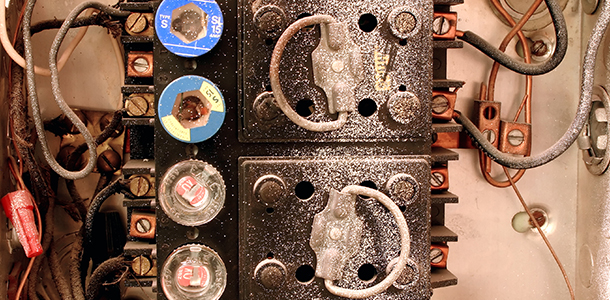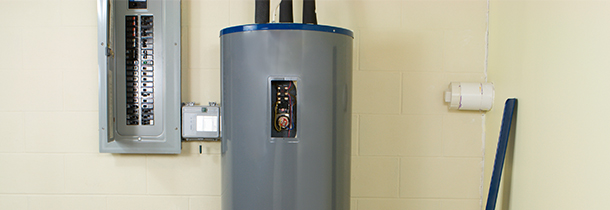The Evolution of the Load Center: From Basic Fuse to Smart Solution!

Channeling electricity to power homes has been instrumental in the advancement to modern living. Today, the electrical hub directing the flow of electrical power within the home is the Load Center, which is comprised of numerous individual circuit breakers to manage power distribution on electrical circuits throughout the home. Ironically, load centers as we currently know them are a relatively new innovation. Although Thomas Edison developed a draft version of a circuit breaker in the late 1800s, fuses were the primary means of overcurrent protection throughout the first half of the 20th century. In the beginning, a “fuse box” contained a couple of fuses and a knife switch to manage power. This all changed in the early 1950s as appliances were added to the home and additional amps were needed to support their energy requirements.
To put this in perspective, prior to the 1950s, a common application was the 120VAC, 30A Fuse holder (2 fuses/circuits and knife clade switch). During the 1950s-1960s the fuse holder was still being used but in a larger capacity at 240VAC, 60A fuse holder (4 fuses/circuits in a panel).
While some manufacturers came out with residential circuit breakers in the late 1940s and early 1950s, it was not until 1955 when a manufacturer launched a quick-open “QO” breaker that they became the de facto standard in new construction.

From 1955-1960 the load center as we typically envision it became standard.
The ground-fault circuit interrupter (GFCI) was introduced in the 1970s, but the convenient receptacle version was preferred to a panel solution. Things remained status quo for years until 2002 when arc-fault circuit interrupter (AFCI) protection requirements were added to the National Electrical Code® (NEC®) in the U.S.
Ten years later in 2012, two major load center manufacturers introduced the plug-on neutral circuit breaker, which eliminated the neutral pigtail. This was a big step forward since pigtails were typically labor and time intensive during installation and clogged up gutters in the load center.
The development and introduction of an integrated AFCI/GFCI product was officially brought to market just in time to align with the 2014 NEC, which requires AFCI protection in the kitchen and laundry area.
Clearly the most significant step forward in load center evolution occurred in 2018 with the launch of the Leviton Load Center. With its all plug-on design, this revolutionary panel gives contractors the ability to install units faster. From a homeowner perspective, the Leviton Load Center circuit breakers with their built-in LED indictor lights makes it easier to identify issues when a circuit breaker trips. Leviton circuit breakers also feature a rocker handle that is easier to actuate, and the overall panel in classic white boasts a sleek, modern appearance with an optional observation window for at-a-glance status checks. This updated look works well with many interiors, so the load center is no longer designated to be tucked away in the basement or utility room. Additionally, it makes an attractive addition to apartment units where the load center is typically placed in the kitchen or living area.
Soon after the initial launch of the Leviton Load Center, Leviton introduced the option of Smart functionality upgrades via the installation of Smart Circuit Breakers and a data hub. Homeowners who choose Smart Circuit Breakers can connect to the My Leviton app and enjoy easy access to their load center’s data via a smartphone, tablet or desktop. Smart functionality allows users to view real time energy consumption, calculate approximate monthly energy costs, know when and why a circuit breaker trips, remotely turn OFF a circuit breaker and much more!

From its humble beginnings to smart integration, the load center has clearly evolved to meet the power and safety needs, as well as the desires, of today’s homeowners. Leviton, like you, looks forward to seeing what innovations the future will hold!


